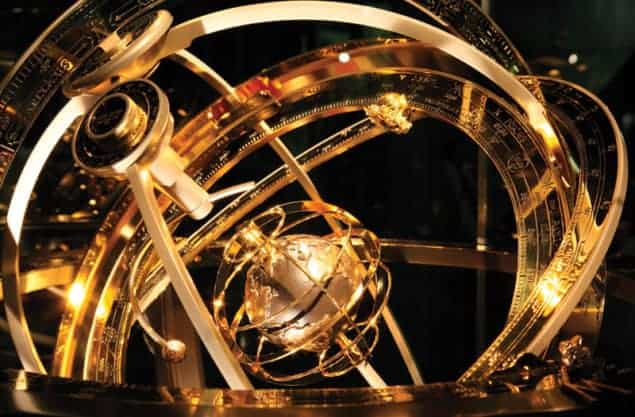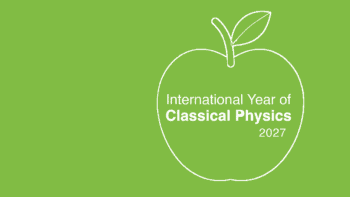The Abacus and the Cross: the Story of the Pope Who Brought the Light of Science to the Dark Ages
Nancy Marie Brown
2010 Basic Books £16.99/$27.95hb 328pp

Nancy Marie Brown’s The Abacus and the Cross is a book with a hero and a villain. The hero is Gerbert of Aurillac, a 10th-century shepherd boy who became a monk, schoolmaster, scientist, mathematician and abbot before reigning at the turn of the first millennium as Pope Sylvester II. Gerbert is the first person in the Latin world known to have used Arabic numerals and the place-value system of counting. His much-used textbook on geometry was not supplanted in the West until 200 years after his death, when full translations of Euclid became available. He designed his own abacus and constructed such instruments as armillary spheres, which were used to represent important celestial circles such as the ecliptic, along with astrolabes, which were used to tell the time and latitude, and to predict the positions of heavenly bodies.
The villain is Gerbert’s lifelong intellectual and political enemy, Abbo of Fleury. Like Gerbert, Abbo became monk, schoolmaster, scientist, mathematician and abbot. Though he was never pope, he has been named a saint, whereas Gerbert’s legacy has been complicated by his popular reputation as a sorcerer. For Brown, a science writer and journalist, the most crucial difference between Gerbert and his nemesis Abbo is that the former showed great creativity, introducing a whole new tradition in mathematics and science in a manner that was distinctively modern and “experimental”. Abbo, in contrast, was much less creative: Brown describes the copious written works he left behind as “disappointingly derivative”, involving merely “well-organized rearrangements of sources commonly used” to create a “fine and tidy summation”.
Brown’s approach in this book is more Abbo than Gerbert. While she provides a good, lively, readable synthesis of scholarly evaluations and translations of the primary source materials, her ample endnotes show little evidence of direct work with primary sources from Gerbert, Abbo or their contemporaries. As Brown observes, not much remains of Gerbert’s own writings, so evidence for his genius can be inferred only indirectly, by tracing how his knowledge spread to his students. She compensates for the lack of documentary evidence by describing what life would have been like for someone like Gerbert. For example, she discusses in vivid detail the typical diet, style of life and pattern of education of a monk; the manufacture and use of parchment, paper and ink; the construction and use of books; and the processes and dangers involved in travel.
Brown’s account of Gerbert’s accomplishments in mathematics and science whets the appetite, but it may not satisfy readers with a scientific background, who will expect to learn in greater detail what was distinctive about Gerbert’s abacus, and how he used it. Her discussion of Gerbert’s complicated political entanglements and ascent to the papacy may be difficult to follow for readers who lack previous familiarity with turn-of-the-millennium history and political intrigue, particularly because she focuses more on what happened (with many names and dates) than on why. A specific point of frustration is her account in chapter 9 of Gerbert’s “figurative poem”. Brown communicates that it was an extraordinary accomplishment, marvellously complex and well worth exploring, but she does not help her reader enter into the poem and its complexities: she sets the table, but she does not serve the meal.
Three themes run through this book. First, Gerbert’s work in mathematics and science serves to show that the European Dark Ages were not that dark after all: creative things were happening, knowledge was advancing, and mathematics and science were already rational and experimental. For Brown, Gerbert served as an important conduit to the West of mathematical knowledge and insight from the Arab-speaking world. The second theme is that science and religion are not (and were not) really at war. Gerbert is an important example of a religious person who did first-rate work in mathematics and science. It was only much later that Petrarch, Washington Irving, William Whewell, John Draper and Andrew Dickson White popularized the whiggish notion of eternal war between science and religion, by circulating the charge that religious people persisted in the uncritical belief that the Earth is flat, not round – a version of history that Brown is at pains to refute.
The third theme of the book is the ways in which history could have been different. If only Gerbert’s hopes and ideals had been realized, Brown argues, religion and science would be more closely linked, and science would bridge the tensions and differences that separate Christianity, Islam and Judaism. But the death of Emperor Otto III in the year 1002 thwarted the plans and ambitions of Gerbert, who had relied on the emperor’s support to become pope in 999. After Gerbert’s own death in 1003, his “enlightened” dark age gave way to a world of deeper darkness: a world dominated by apocalyptic fear, religious intolerance and crusades; a world in which the idea of a scientist–philosopher pope was no longer thinkable; and a world in which Christian and Jewish scholars were no longer able to work together to translate Greek and Arabic scientific texts.
The Abacus and the Cross represents an intellectually honest, good-faith effort to portray Gerbert and his accomplishments for a popular audience. But both scientifically and theologically minded readers may echo Brown’s plaint of “what might have been”. If only she had gotten more deeply into the scientific issues – it would have been interesting, for example, to hear in some technical detail how Gerbert’s abacus actually worked, or how his “figurative poem” played out on multiple levels of meaning. And if only she had entered into some of the relevant theology – it seems strange that a book which is concerned to debunk the notion of a “war” between science and religion does not address any theological issues, but Brown deals with religion only as an institutional and sociological force. In this book, the only place the Cross shows up is in the title.



